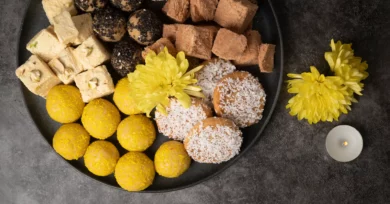The Sami, also known as the Saami, are indigenous people inhabiting the northern regions of Scandinavia and parts of Russia. With a rich cultural heritage spanning centuries, they have traditionally relied on reindeer herding, fishing, and hunting to sustain their communities. Today, many Sami live in the United States, contributing to the cultural diversity of the country.
Historical Background
The history of the Sami people is intertwined with the harsh but beautiful landscapes they call home. For centuries, they have maintained a deep connection with the Arctic environment, adapting their lifestyles to survive in the extreme conditions of northern Scandinavia and beyond. Their history is marked by resilience in the face of colonization and efforts to preserve their distinct cultural identity.
Sami Presence in the US
Urban Centers and Cultural Hubs
In urban centers across the US, The Sami have established vibrant communities that showcase their rich cultural heritage. Cities like Minneapolis, Minnesota, and Anchorage, Alaska, are notable for their significant Sami populations. These communities contribute to the cultural tapestry of these cities through festivals, cultural centers, and educational programs that celebrate The traditions.
Rural Enclaves and Traditional Homelands
Beyond the bustling cities, They also inhabit rural enclaves across regions like Northern Minnesota and parts of Michigan’s Upper Peninsula. These areas serve as traditional homelands where They maintain close-knit communities and continue to practice their ancestral traditions. The serene landscapes of these regions provide a backdrop for preserving and passing down The language, crafts, and way of life.
Coastal Influences and Maritime Communities
In coastal regions such as Maine and Washington state, They have integrated their maritime traditions with local American culture. Fishing communities along the East and West Coasts have embraced aspects of seafaring heritage, contributing to a unique blend of traditions that highlight the resilience and adaptability of people in the US.
Cultural Exchange and Diaspora Communities
The Sami diaspora in the US extends beyond geographical boundaries, with communities actively participating in cultural exchange programs and events. Through these initiatives, They showcase their cultural diversity and foster understanding among different ethnic groups in the US. This interaction not only enriches American society but also strengthens the bonds within The diaspora, ensuring the preservation and promotion of their cultural identity for future generations.
Language and Dialects
The Sami language, integral to their identity, comprises several distinct dialects spoken across their communities in the US. Each dialect reflects not only linguistic diversity but also regional nuances in the cultural landscape. In urban areas like New York City, efforts to preserve these languages are gaining momentum through community language schools and cultural exchanges. This proactive approach ensures that future generations can connect deeply with their linguistic heritage.
Traditional Clothing and Crafts
The Sami are renowned for their intricate traditional clothing and crafts, which play a pivotal role in preserving their cultural identity in the US. From beautifully embroidered duodji (handicrafts) to intricately patterned gákti (traditional Sami clothing), these artifacts serve as tangible expressions of the cultural legacy. In cities like Chicago and Minneapolis, cultural festivals proudly showcase these crafts, inviting locals to experience firsthand the artistry and craftsmanship synonymous with their heritage.
Music and Dance
Music and dance are integral to the cultural tapestry in the US, blending traditional rhythms with contemporary expressions. Across cities such as Los Angeles and Seattle, Sami musicians are revitalizing ancient joik chants and incorporating modern influences, creating a unique fusion that resonates with diverse audiences. Through performances and workshops, musicians foster cultural exchange and celebrate their rich musical heritage, ensuring that their traditions thrive far from their Arctic homelands.
Education and Employment Opportunities for the Sami Community
In the bustling cities and quiet corners of America, the Sami find themselves navigating a landscape rich with educational prospects and career pathways. From enrolling in local schools to pursuing higher education at prestigious universities, education plays a pivotal role in shaping the future youth in the US. With a focus on cultural preservation and academic excellence, many young Sami individuals are actively engaged in programs that celebrate their heritage while preparing them for diverse career fields.
Employment avenues span a wide spectrum, from traditional crafts and arts to modern professions in technology and healthcare. In urban hubs like New York and San Francisco, Sami entrepreneurs are carving out niches in sustainable fashion, blending their ancestral knowledge with contemporary trends. Meanwhile, in rural communities across the Midwest and Alaska, Sami individuals contribute to local economies through agriculture and eco-tourism ventures, showcasing their deep-rooted connection to the land.
Sami Influence on American Culture: A Vibrant Tapestry
Across the United States, the influence of the Sami community weaves a colorful thread into the fabric of American culture. Through art exhibitions in Chicago, traditional music performances in Seattle, and culinary showcases in Boston, they showcase their rich heritage and unique traditions to audiences eager to embrace cultural diversity. From reindeer husbandry techniques adopted by Indigenous communities in Minnesota to Sami-inspired fashion trends spotted on runways in Los Angeles, the impact of Sami culture resonates deeply within American society.
Addressing Contemporary Issues and Challenges
In today’s dynamic socio-political climate, we face a myriad of challenges that require resilience and proactive engagement. Issues such as land rights, environmental conservation, and cultural appropriation demand thoughtful advocacy and community solidarity. Organizations like the North American Sami Association (NASA) work tirelessly to address these concerns, advocating for policies that protect indigenous rights and promote cultural awareness. Through grassroots initiatives and partnerships with governmental bodies, the community in the US strives to safeguard its cultural legacy while forging pathways toward a sustainable future.
These examples highlight the dynamic interplay between education, employment, cultural influence, and community resilience within the population across the United States.
Celebrating Sami Culture: Festivals and Cultural Exchange
Major Sami Festivals in the US
Throughout the United States, various vibrant festivals celebrate the rich heritage of the Sami people. These events showcase traditional music, dance, and cuisine, providing a unique opportunity for Americans to immerse themselves in Sami culture. From bustling urban centers to rural communities, these festivals draw attendees eager to experience the distinctive traditions of the Sami firsthand.
One such prominent event is the Sami National Day Festival, held annually in [location]. This festival marks the national day, featuring performances of joik (traditional Sami singing), colorful Sami attire displays, and culinary delights such as bidos (reindeer stew) and gáhkku (Sami bread). Visitors can participate in workshops on traditional crafts like duodji, learning firsthand from Sami artisans.
Another highlight on the cultural calendar is the Film Festival, which screens films from Sami filmmakers and explores themes relevant to their identity and contemporary issues. This event not only entertains but also educates attendees about the challenges and triumphs of the community both in the US and globally.
Participation and Cultural Exchange
Participation in these festivals offers Americans a chance to engage directly and learn about their customs and beliefs. Attendees can join in traditional Sami dances, try their hand at handicrafts like silverwork and leathercraft, or simply enjoy the warm hospitality that characterizes Sami gatherings.
Cultural exchange is a cornerstone of these events, fostering understanding and appreciation of The Sami’s unique cultural practices. Through shared experiences in food, music, and storytelling, these festivals create bridges of cultural understanding between The Sami and the diverse tapestry of American society.
Whether you’re a first-time attendee or a seasoned festival-goer, these celebrations provide a memorable glimpse into their vibrant cultural heritage right here in the United States.
Conclusion
In conclusion, the vibrant festivals celebrating Sami culture in the United States not only showcase the rich traditions of the Sami people but also foster cultural exchange and understanding. From the lively festivities of Sami National Day to the thought-provoking screenings at the Film Festival, these events offer Americans a unique opportunity to immerse themselves in Sami music, dance, cuisine, and craftsmanship. Through these shared experiences, attendees gain a deeper appreciation for Their heritage and contributions, contributing to a more inclusive and culturally enriched society in the US.
Also Read:
Best American Destination: Landmarks & Architectural Treasures






